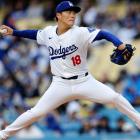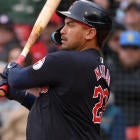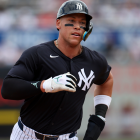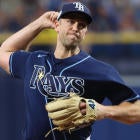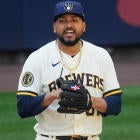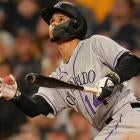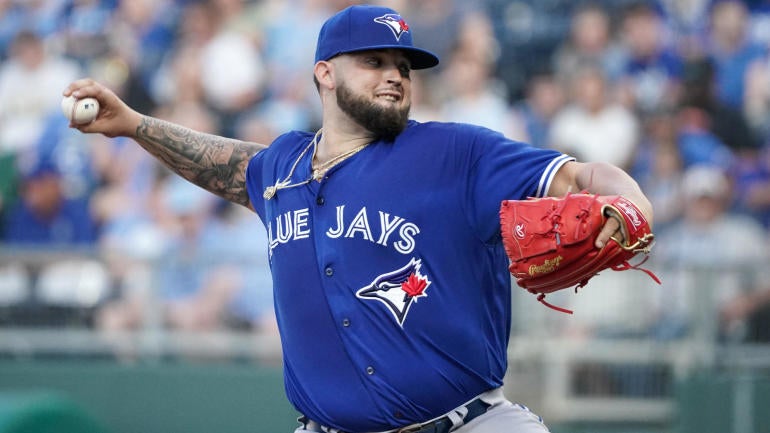
We're not even through one full turn of the rotation, and already, your rotation might look like a bit of a disaster. There was no shortage of high-profile, Fantasy-relevant pitchers who struggled in their first start, after all … and all of them seem to have been on my team in our main Roto league. Through the first four days of the season, I'm sporting an 8.33 staff ERA with a 1.89 WHIP and no wins through six starts.
That squad lost Justin Verlander right before the season, and then Robbie Ray after his very first start. I also threw Chris Sale, Josiah Gray, Jameson Taillon, and Trevor Rogers out there; the best start I got was Eduardo Rodriguez's, who gave me 5.1 innings with three earned runs. Yep, no quality starts from my entire staff. Things are looking rough.
It's a big hole to try to dig out of, but I'm obviously not just dropping my entire pitching staff after one start. That would be an overreaction.
But … how much of an overreaction would it be? Your opinion on a player should never fully change because of one game, even a really, really bad one. But it's easier to say that for someone like Corbin Burnes than, say, Jared Shuster. Their results might have been similar, but obviously, Burnes has earned much more of the benefit of the doubt here.
So, we'll start with Burnes as we take a look at some of the biggest disappointments from the first turn through the rotation.
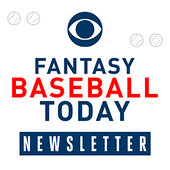
Fantasy Baseball Today Newsletter
Your Cheat Code To Fantasy Baseball
You're destined to gain an edge over your friends with advice from the award-winning FBT crew.
Thanks for signing up!
Keep an eye on your inbox.
Sorry!
There was an error processing your subscription.
Corbin Burnes – 5 IP, 4 ER, 3 H, 3 BB, 3 K
Concern Level: Nonexistent
We'll start with an easy one. Burnes has more than earned the benefit of the doubt at this point, having been one of the best pitchers in baseball over the previous three seasons. It was an uncharacteristically poor showing from him, but not that uncharacteristic; he had an almost identical line on Opening Day against the Cubs last season. Burnes' velocity was down just a bit in each start and he didn't get the kind of whiffs we're used to seeing, but Burnes followed last year's opener with eight strikeouts in seven shutout innings in his next outing. It's possible that Burnes will struggle this season, and if so, maybe his 94 mph cutter average Thursday will end up being a harbinger of doom. But that's not something I'll even think about until May, at the earliest.
Alek Manoah – 3.1 IP, 5 ER, 9 H, 2 BB, 2 K (2 HR)
Concern Level: Nonexistent
Sometimes you just run into a red-hot lineup, and the Cardinals are on a heck of a scorcher to open the season – they collectively hit .373/.426/.591 in 122 plate appearances in their three games against the Blue Jays. This lineup is going to terrorize pitchers all season long, and every once in a while, an ace will get victimized. Manoah is due some regression from last year's 2.24 ERA, but this isn't't the start of some major step back. Manoah's velocity was actually up slightly, which was a concern in the spring, so you could even take some solace in that. Manoah's command needs to be better than it was, especially against a lineup like St. Louis', and it will be moving forward.
Chris Sale – 3 IP, 7 ER, 7 H, 2 BB, 6 K vs. BAL
Concern Level: Low(-ish)
Most of the Fantasy analysis you see in the first few days and weeks of the season is driven by confirmation bias. Analysts are either viewing everything in the rosiest light possible because it confirms their priors or they are working overtime to avoid confirmation bias. But, whether you steer into it or actively try to avoid it, confirmation bias is going to color just about everything you see right now.
And, admittedly, that's why I'm not as worried about Sale's terrible first start as some other analysts will be. Because I liked him as a bounce-back candidate coming into the season and I'm willing to give him the benefit of the doubt. I'm willing to write his struggles off as rust. To that end, I'd point you to his velocity – Sale peaked at 97.2 mph and averaged 94.2 with his fastball, which is right around where he was between 2016 and 2018, when he was arguably the best pitcher in baseball. The stuff looked, more or less, right.
Sale just didn't. He gave up three batted balls of at least 103.8 mph with the fastball and three others of at least 102.5 mph with each of his other pitches, while generating a good but hardly overwhelming 13 whiffs. If you are inclined to be negative, you could say that, while Sale used to be able to throw in the mid-90s with ease, he might have to overexert himself now, messing up his mechanics and leading to command issues. Maybe that exertion flattens out his pitches, making them less effective than they used to be.
I can't prove that isn't the case. I have faith that Sale will figure it out, because of his track record and the fact that the velocity seems fine, but that might be overly optimistic. I would have been thrilled if he came out and struck out 10, and I might have even hit you with a victory lap; am I a hypocrite for arguing that, when he struggled instead, we should give him the benefit of the doubt?
Perhaps. But this is very much a situation where I want to see more from Sale before I change my opinion. Another couple of starts like this would definitely change my tune.
Chris Bassitt – 3.1 IP, 9 ER, 10 H, 0 BB, 0 K @STL
Concern Level: Not Non-existent
With a 3.13 ERA over his previous three seasons, Bassitt had emerged as a dependable, if boring, Fantasy option that nobody was ever really excited to have on their team. The results were never worse than "pretty good" – and were often very, very good – but the Fantasy Baseball world treated him like the bottom was about to fall out at basically any moment.
And maybe this was the moment. I already talked about how the Cardinals lineup might just spend large chunks of this season making opposing pitchers completely miserable, so that's certainly part of the issue here. But it's not all of it. Bassitt gave up four home runs and a whopping nine batted balls over 100 mph, and he just wasn't fooling anyone. Bassitt got four swings and misses on 57 pitches, and his velocity was down 1.7 mph with his fastball, with similar results across the board.
Bassitt has never been a hard thrower, and during the spring, he told reporters he wasn't concerned about his velocity being down. And, for what it's worth, this was an improvement over the spring, so maybe he's still working his way up to full strength. But it was pretty concerning to watch him get hit as hard as he did, even against what looks like a very tough matchup. Bassitt has a long enough track record to where he's earned some benefit of the doubt. But it's also possible that the Fantasy community's reticence to buy in was the right call.
Hunter Greene – 3.1 IP, 3 ER, 5 H, 3 BB, 8 K vs. PIT
Concern Level: Meh
This wasn't a great start, of course. In fact, it was a pretty bad one – an 8.10 ERA is, in fact, bad! But I don't think it was actually all that concerning. Greene only gave up three hard-hit balls in the whole outing, including one to Oneil Cruz on a 101.3 mph fastball at the letters that … well, let's just say there aren't more than a few hitters in the whole league who can do something like this:
OPENING DAY CRUZ MISSILE! pic.twitter.com/nIxDodAScA
— Pittsburgh Pirates (@Pirates) March 30, 2023
Of course, the issue for Greene is, for as hard as he throws, hitters actually had quite a bit of success against his fastball in 2022, and that did continue on Opening Day. Opposing hitters went 4 for 11 on the fastball, adding a double to the homer, and that was against a lowly Pirates lineup. Greene's velocity was actually up in the start, to 100.4 mph, but he used the pitch 70.4% of the time and didn't throw any changeups, and that mix is probably still going to lead to some issues.
Yes, Greene throws hard; maybe harder than any starting pitcher in the history of the game. But he's not going to live up to expectations throwing it two-thirds of the time, and he probably needs his changeup to become more of a weapon. Right now, it doesn't look like it's there yet. At least after one start.
Jack Flaherty – 5 IP, 0 ER, 0 H, 7 BB, 4 K vs. TOR
Concern Level: More than you'd think
Allowing zero hits in a start is, on the whole, a very good thing. It is, as the kids say, what you want to see. And it wasn't just good luck in this instance, as Flaherty limited the Blue Jays to just two hard-hit balls on 10 in play, with an average exit velocity of 85.4 mph that would be an elite number if he could sustain it.
I just don't have any faith he will. Flaherty's velocity was way down, about 2.5 mph across the board on nearly all of his pitches, and he got just eight whiffs on 95 pitches, a very low mark. The Blue Jays couldn't square him up, and that was enough to get through the day, but I didn't see much here to suggest Flaherty can still be an above-average pitcher.
It reminds me of Noah Syndergaard's 2022 season, where he generated enough weak contact and kept the walks down enough to make up for a complete lack of strikeouts. Except, of course, in Flaherty's case, he was all over the place, as highlighted by the seven walks. That lack of control makes me think the quality of contact suppression here might have been a fluke – if he didn't know where the ball was going, how much credit can you really give him for not getting hit hard.
I don't think you have to drop Flaherty, but I'm open to it. I thought his stuff looked dramatically diminished, and much worse days are ahead. I was willing to take a late-round flier on Flaherty in drafts this season, but I'm also willing to give up on him after this outing. I saw enough.
Josiah Gray – 5 IP, 5 ER, 7 H, 2 BB, 4 K vs. ATL
Concern Level: VERY High
Gray is a pitcher I've long been enamored of. He throws hard and has two very good breaking balls that both generate plenty of swings and misses, and he's put up very good minor-league numbers over the years – a 2.41 ERA with 228 strikeouts in 198 innings. Unfortunately, his fastball was the second-worst pitch in baseball, per Statcast's pitch arsenal stats. Gray deserves credit for recognizing that limitation and working this offseason on a cutter with the hopes of minimizing the exposure of his worst pitch, and there were signs it worked in the spring – he didn't allow a homer in 16.1 innings this spring!
That did not carry over to the regular season, it is fair to say. Gray got ahead 0-2 to the first batter he faced, Ronald Acuña, but he tried to triple up on sliders and paid the price, as Acuña hit that third pitch into the seats. Welp.
He tried a different tack to Matt Olson, the next hitter, but started that one with two fastballs for balls. Down 2-0, Gray debuted that cutter, a pitch he surely hopes can help him with the platoon disadvantage. Or not. Olson crushed that one, hitting it 111 mph and 406 feet away.
Gray would give up another homer, this time to Marcell Ozuna, again on the cutter, one of six batted balls hit over 95 mph off him before the day was done. All in all, he looked much like the pitcher he was last year. I don't want to give up on him entirely, but Gray is very much in the category of pitchers who needs to prove that he's taken a step forward quickly, and he decidedly did not do that. If you want to drop him, I certainly can't blame you.
Jarred Shuster – 4.2 IP, 4 ER, 6 H, 5 BB, 1 K @WAS
Concern Level: DEFCON: Drop
I think there were probably some jitters going on for Shuster, who walked three batters in his first inning of work and generally didn't look all that sharp Sunday. It was his major-league debut, so that's understandable, but while that's a reasonable explanation, I'm not sure it's enough to excuse a poor showing against that Nationals lineup. The scouting report for Shuster suggested that his changeup was his only real weapon, with his fastball and slider both closer to average pitches that rely on location to be effective. And what we saw Sunday is, if he's not locating well, it's a very uninspiring repertoire.
Over at PitcherList.com, Ryan Amore has a GIF breakdown of Shuster's debut, and you can see there how he dug a pretty deep hole for himself. Shuster's fastball maxed out at 91.9 mph and averaged 90.1 – of the 248 pitchers who threw at least 1,000 pitches in the majors last season, only 19 had a slower fastball, on average. The slider failed to generate even a single whiff, and generally looked pretty mediocre. Here's one of the better ones he threw, low and in for a called strike:
For the most part, Shuster looked like the scouting reports suggested he would, only without the command that is supposed to make it all work. What that left us with was a pitcher who, quite frankly, didn't look like he belonged in a major-league rotation. Shuster's minor-league track record suggests that may be a harsh judgment – he had a 3.29 ERA with 145 strikeouts in 139.1 innings – and we probably caught him on an especially bad day. But bad days happen, and they typically don't result in 5 walks and only one strikeout, especially against a lineup as bad as this Nationals one. Last season, there were only 18 instances of a pitcher walking at least five with one or zero strikeouts, and pretty much none of them came from good Fantasy pitchers – Wade Miley was probably the only one who was worth starting for more than a few weeks at a time .
Shuster was already sent down Monday to make room on the roster for Dylan Dodd. And, while it's easy to say after we saw this kind of outing from Shuster, I think Dodd is the more interesting option of the two. His stuff is, by all accounts, a bit more projectable, which should give him a bit wider margin for error.














